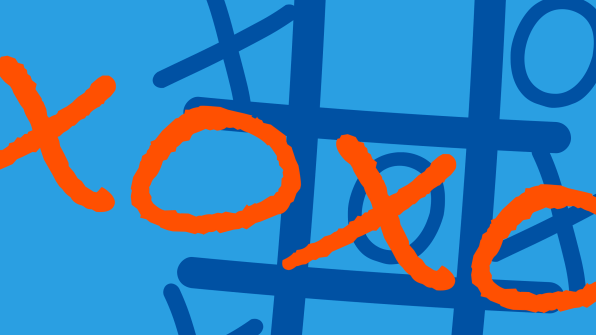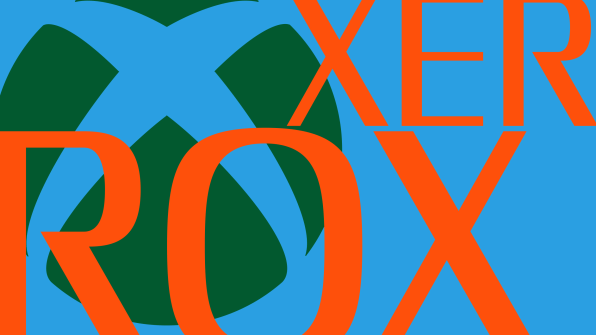- | 9:00 am
How the letter ‘X’ became history’s most mysterious symbol
It’s the most versatile and captivating letter in the alphabet.

At last, Elon Musk has done it. After several attempts, he has staked an official claim to the letter X.
Musk’s fascination with the letter dates back to the turn of the century, when he tried naming his second company, now known as PayPal, X.com (he was later ousted from the company). Not long after, Musk founded SpaceX, relegating the letter to a mere suffix. In 2015, he launched a Tesla SUV named Model X. Even his youngest child wasn’t spared his enthusiasm for the letter, naming him X Æ A-12—or “X” for short.

Now, with Twitter rebranded as X, the letter has found itself in its brightest spotlight since Douglas Coupland defined an undefinable generation in his 1991 novel Generation X: Tales for an Accelerated Culture. As it happens, Musk’s obsession marks only the latest chapter in the kaleidoscopic history of the letter X—a letter that, over the course of its unfathomably long existence, has attracted symbolisms like nails to a magnet and grown to become the most versatile, most captivating letter in human civilization.

A MARK OF HUMAN INTENTION
What makes the letter X so versatile? For starters, it doesn’t feature in the proto-Sinaitic alphabet, which was developed sometime between 1900 and 1700 BC and is considered the ancestor to most modern alphabets. Johanna Drucker, a professor of bibliographical studies at UCLA and author of the book Inventing the Alphabet, explains that the original alphabet counted 18 or so characters, but X wasn’t one of them (neither were J, W, or U).
This means that X is missing from the Book of Creation, the oldest known Hebrew text which assigned a role to every letter, Drucker says. As a result, the X has hurtled through time with no symbolism attached to it other than what humans have made of it. “I think X is a special mystery letter,” Drucker says. “Second after that would probably be O because it can stand for absent value, a placeholder.”
Unsurprisingly, X and O are often juxtaposed with one another (think: xoxo for hugs and kisses, or the Xs and Os of tic-tac-toe). Some have theorized that X came to mean “kiss” after an 18th-century clergyman named Gilbert White concluded his letter with a row of Xs, but regardless of its origin story, Drucker says the X and the O became two of the most distinctive characters in the history of inscriptions because they consist of two fundamental shapes: straight lines and curves.

A LETTER MILLENNIA IN THE MAKING
The X in particular, Drucker says, is the most intentional mark a human can leave. Before any standard writing systems were invented, the X showed up as a mark in cave drawings, along with the zero and a zigzag line. “It registers within a natural landscape as a human-made mark,” Drucker says.
The X as we know it—two diagonal lines intersecting in the middle—appeared for the first time in the writings of the Romans, but it wasn’t invented by them. The origins of the letter likely go back to the Phoenicians, whose writing system emerged around 1050 BCE. They had a letter called samekh, which translated to something like a “pillar,” or, quite literally, “a fish.” The samekh letter consisted of one vertical line intersected by three horizontal lines—a bit like a fish skeleton.
Over the next few centuries, the Phoenician writing system spread to the Mediterranean, and the samekh morphed, as the Greeks borrowed it from the Phoenicians, and the Romans adapted it from the Greeks.
But it’s impossible to look at the history of the X without looking at the role the letter has played in algebra. Babylonians had an advanced number system; Persians had immense knowledge in astronomy; and Greeks mastered geometry. But none of them ever used the letter X. It wasn’t until the 17th century that the letter entered the algebraic picture, ushered in by none other than the French philosopher and mathematician René Descartes.
“He’s looking at the alphabet and he’s thinking Well, let’s take these letters at the end of the alphabet because they somehow seem less used,” Drucker says. And just like that, the two-dimensional coordinate plane is born, formed by the intersection of the x-axis and y-axis.
X eventually became a stand-in for an unknown value—the thing to solve for. In other words, X is a mystery. “It can stand for anything, so what is it?” Drucker says, noting it’s the kind of thrilling enigma that appeals to 13-year-old boys. Or, apparently, 52-year-old billionaires.

A GENERATION OF X-BRANDS
In the 1990s, the letter X entered popular culture with a bang, thanks to Coupland’s Generation X novel. Brands quickly jumped on the bandwagon. When the Xbox came out in 2001, the one-letter prefix provided a contrasting alternative to the lowercase letter i that had dominated ever since the launch of the iMac. “There were iGrills, iHomes, and even iCarlys,” Joe Parrish, chief creative officer and partner at The Variable, told me via email. “Fast-forward to the launch of the Xbox, and we started to see a shift in first-letter attribution.”
According to Parrish, the iMac introduced a new type of portmanteau where a single letter could suggest a number of characteristics. Whereas i implies the internet, X connotes experimentation. X became shorthand for something that is hard to define, like with the X Factor franchise. It infers speed, like with Expedia or FedEx, and it is why back in 1960, creative consultancy Lippincott encouraged the Haloid Xerox Co. to drop “Haloid” from its name. “Whether it’s pronounced like ks or z it gives a sense of speed and impact to a word,” explains Jake Hancock, Lippincott’s senior brand strategy partner.
Its appeal is also graphical—the letter is perfectly balanced, and its “symmetry is highly memorable,” says Colin Chow, global managing partner at the consultancy TwentyFirstCenturyBrand.
But can a single X stand on its own?
Naturally, the jury of branding experts who contributed to this story was as split as an X, but perhaps the most vocal was Lippincott’s Hancock. “The move from Twitter to X is in many ways the least innovative or provocative way to suggest ‘innovative and provocative’ because the letter has so frequently been used in this way over the decades,” he says. “Someone should create an Excel sheet to expound upon all the examples. You could call it the X-Files.”





































